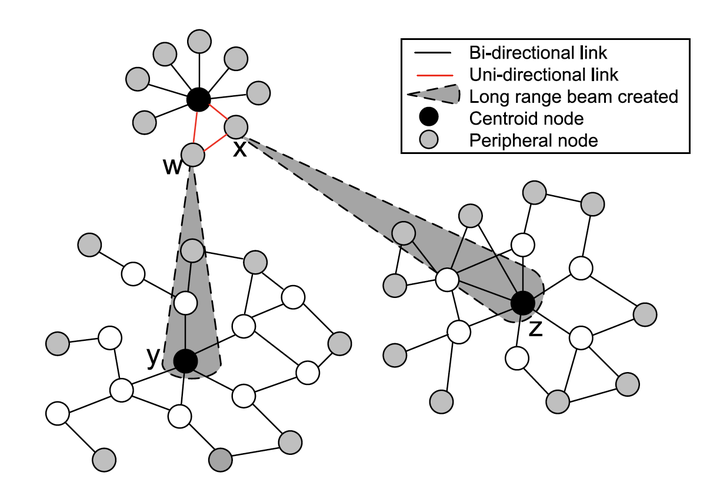
Abstract
It is highly desirable and challenging for a wireless ad hoc network to have self-organization properties in order to achieve wide network characteristics. Studies have shown that Small-World properties, primarily low average path length (APL) and high clustering coefficient, are desired properties for networks in general. However, due to the spatial nature of the wireless networks, achieving small-world properties remains highly challenging. Studies also show that, wireless ad hoc networks with small-world properties show a degree of distribution that lies between geometric and power law. In this paper, we show that in a wireless ad hoc network with non-uniform node density with only local information, we can significantly reduce the APL and retain the clustering coefficient. To achieve our goal, our algorithm first identifies logical regions using the Lateral Inhibition technique, then identifies the nodes that beamform and finally the beam properties using Flocking. We use Lateral Inhibition and Flocking because they enable us to use local state information as opposed to other techniques. We support our work with simulation results and analysis, which show that a reduction of up to 40% can be achieved for a high-density network. We also show the effect of hopcount used to create regions on APL, clustering coefficient and connectivity.